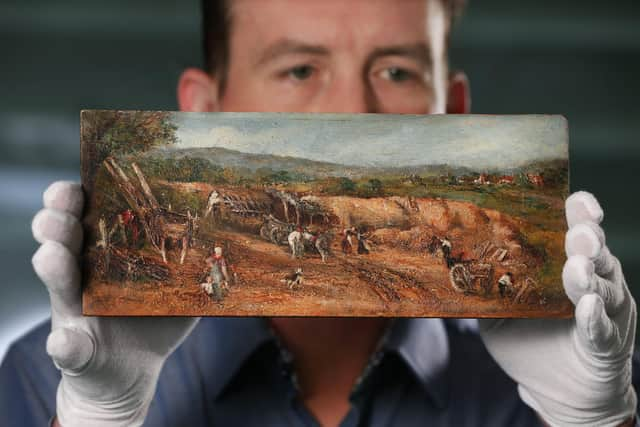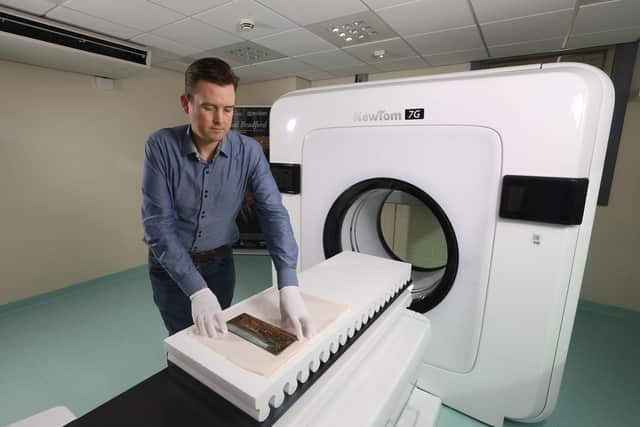John Constable: Scientists to use CT scanners to test authenticity of Old Master
Scientists at the University of Bradford used hi-tech imaging and spectroscopy equipment, including CT scanners, to analyse a painting purported to be by 19th century landscape artist John Constable.
The painting, which is in private ownership, underwent the tests in a bid to establish its provenance.
Advertisement
Hide AdAdvertisement
Hide AdThe 19th century oil painting was put through a series of “non-destructive” tests involving CT scans, Raman spectroscopy (a technique used to create a chemical fingerprint), 3D microscopy to create a 3D visualisation at the microscopic level, and finally XRF (X-ray fluorescence), a technique used to identify the elements in a sample.


Dr Alex Surtees is a lecturer in Forensic Science at the University of Bradford and hopes the combination of tests will generate new evidence that can then be put before art experts.
The former analytical chemist said: “We are trying to provide a more scientific evidence base for the evaluation of works of art. We will spend a couple of weeks conducting the tests and then it will take a couple of months to analyse data. A report will then be presented to Constable experts.
“The painting features the sort of pigments that John Constable used in his palette. Through CT scanning, we aim to find evidence of ‘overwork’ on the painting – these are layers of paint done at different times, a technique Constable was known to use.
Advertisement
Hide AdAdvertisement
Hide Ad“What we are doing is taking a forensic approach to the attribution of artwork. It is certainly a ground-breaking combination of techniques, even for traditional scientific tests. With the naked eye you can recognise brushstroke work, but you can’t determine the chemical composition of things or see beneath the surface - you need technology for that.


“Science alone cannot be used to identify the artist behind a particular work. However, what science can provide is the identity of the pigments and the techniques used in that work to provide evidence as to who the artist may have been.”
He added: “This kind of work is exciting and it benefits my own research.”
Dr Surtees has previously conducted research on two other paintings attributed to Constable, The Coming Storm and ‘Norwich School – Locking-up with a horse drawn barge’.
Advertisement
Hide AdAdvertisement
Hide AdHis work has led to debate among experts as to whether the paintings are by John Constable or by his son LIonel, an artist in his own right who had a similar style to his father.
Constable (1776-1837) was best known as a renowned landscape artist, particularly his works of Denham Vale National Landscape, now designated an Area of Outstanding Natural Beauty, located on the Essex-Suffolk border, which was near his home. He died aged 60 in 1837.
‘Sandpit’ shows a scene from Henfield, a market town in West Sussex, featuring a rural landscape in the foreground with labourers working among animals, while the painting’s background shows hills and a blue sky.
Comment Guidelines
National World encourages reader discussion on our stories. User feedback, insights and back-and-forth exchanges add a rich layer of context to reporting. Please review our Community Guidelines before commenting.
